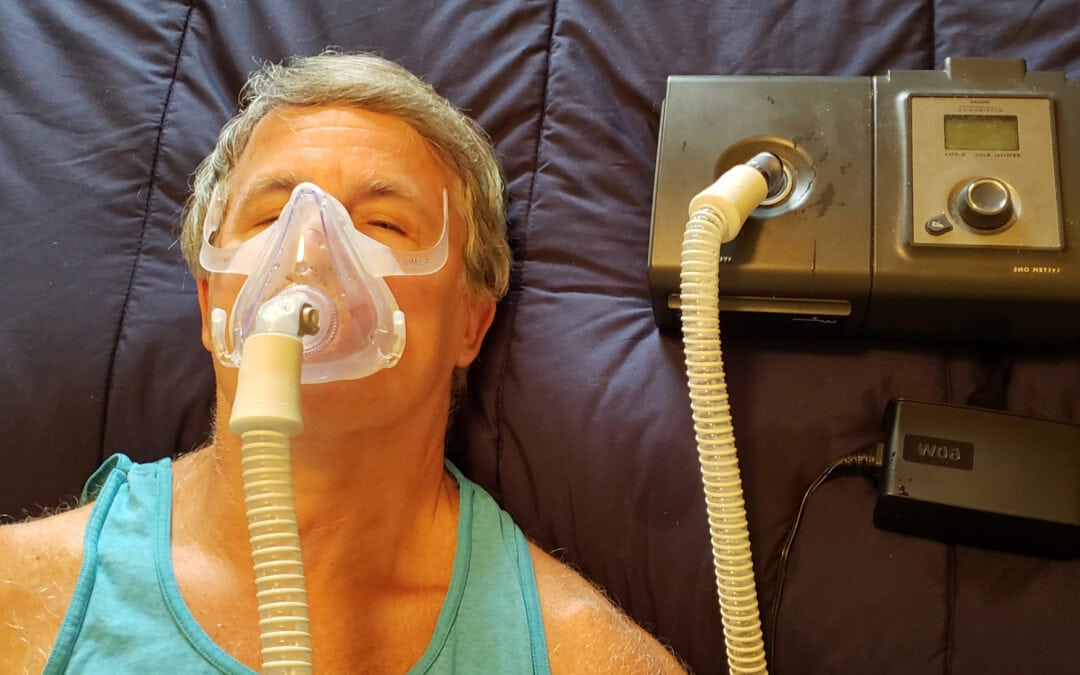If you have sleep apnea and have started using a CPAP machine, chances are that your sleep has improved. And while there is an adjustment period to get used to using your CPAP machine, you’re likely to quickly notice how much more restful you feel and how much more energy you have. But what happens if you begin to notice old symptoms again?
If you start noticing symptoms that you experienced before starting your CPAP therapy, or if you’ve been informed that your snoring has started up again, there can be a simple cause of this backslide. Your CPAP mask may have a leak. Keep reading to learn how to determine if your mask has a leak and what you can do about it.
Why Mask Leaks Matter
Ensuring that you are getting the correct level of air pressure in your airway from the CPAP machine is key to how effective your CPAP therapy is. Your titration study determined the correct air pressure needed to keep your airway from collapsing.
CPAP masks (and machines) all have acceptable levels of intentional leaks so that you can exhale. However, if a weak seal or a hole causes the leak, the pressure can go too low. If this happens and you aren’t getting the correct amount of pressure, it can lead to a partial or complete collapse of your airway.
Mask leaks can cause annoying problems as well. For example, the leaking air could dry out your eyes, or the leak could make a hissing or whistling noise. To avoid all of these problems, finding and resolving a mask leak is essential.
Causes of Mask Leaks
Most leaks are easy to find and easy to fix. Here are some common reasons why CPAP masks leak and what you can do to remedy the problem.
Poorly Fitted Headgear
It may sound contradicting that overtightening the straps on your headgear can cause a leak, but it’s true. Some CPAP mask cushions seal by inflating. If your headgear is too tight, it can keep the cushion from fully inflating.
But you also need to make sure you tighten your headgear enough. If you don’t, it can leave gaps for air to escape. After you’ve turned on your CPAP machine, your headgear should be snug to ensure there aren’t any gaps, but not overly tight, causing discomfort.
To correct this problem, lay down in your preferred sleep position and then adjust your headgear. When you’re standing or sitting, your face is a different shape than when you are lying down.
Wrong Size Frame or Cushion
If your CPAP mask is the wrong size, you could experience leaks. Unfortunately, there is no standard sizing between manufacturers, and often it’s unclear where you should measure from. However, you can avoid this problem by having a mask fitting session before purchasing a new mask.
Old Equipment
As with everything, your CPAP mask will wear out over time. Masks are typically made from plastic or silicone, both of which can develop micro-tears. In addition, your headgear and frame will stretch over time. All of these issues can lead to your mask not sealing correctly.
Avoid this problem by replacing your CPAP supplies regularly. As a general rule, you should replace nasal pillows and cushions approximately every 14 days, your mask frame every three months, and your headgear every six months. Of course, if you notice any issues between these timeframes, replace your supplies sooner.
Dirty CPAP Cushion
If not cleaned regularly, dirt, dead skin cells, and oil can build up on your cushion and keep your mask from sealing properly. Not only will it cause your mask to leak, but it can also lead to a buildup of bacteria and germs.
Make sure to wipe your mask daily with a CPAP wipe or a damp cloth. You should also wash it with warm, soapy water weekly.
Your Mask Isn’t Right for Your Sleep Style
There are different style masks to help provide options for every sleep style. If you’re a side sleeper, you may find that a full face mask doesn’t seal correctly because of your pillow. Side sleepers who are mouth breathers may also find that a nasal mask won’t work either because the airflow escapes from their mouth before it reaches their airways.
When choosing your mask, be upfront with your lifestyle. If you aren’t happy or comfortable using your CPAP mask, you’ll likely stop your treatment.
Choose the right mask by testing out different types and styles. Typically, nasal masks or nasal pillow masks are the preferred choice for stomach sleepers, side sleepers, or active sleepers. Because they have such a slim profile and smaller cushions, they allow for more movement.
If you’re a mouth breather, you may lean more towards a full face mask. If you would rather use a nasal or nasal pillow mask but are a mouth breather, you can use a chinstrap to keep the air from escaping from your mouth.
Let DreamZz Sleep Center Help You Get Back to Sleep
If you’re experiencing a mask leak, it’s essential to continue your sleep therapy plan and don’t make any changes without speaking with your doctor. If you’re troubleshooting your mask leak and can’t seem to get it resolved, we want to help. Our team can help you further troubleshoot your problem and help you order the necessary supplies to fix the problem.
DreamZz Sleep Center is your one-stop solution for all your sleep therapy needs. Not only do we listen to your sleep concerns and provide you with treatment options, but our customer service doesn’t stop there. We offer PAP accessories and equipment from brands like Fisher & Paykel, Philips Respironics, and Resmed.
Contact us today, and let’s get you back to sleep.


Recent Comments